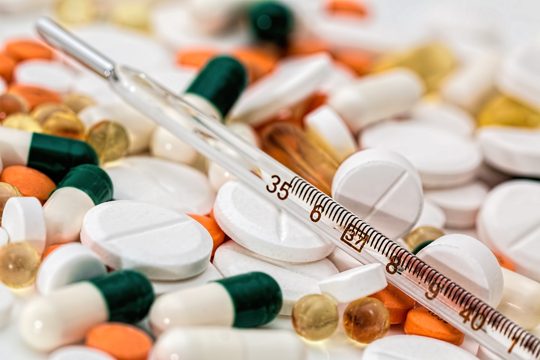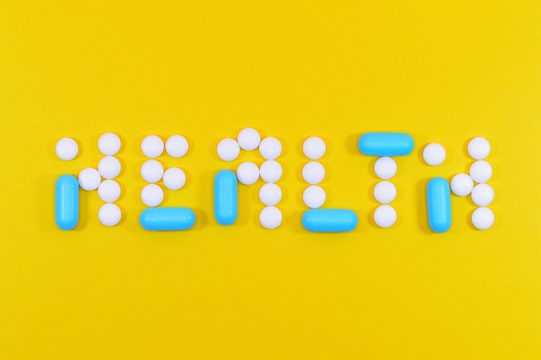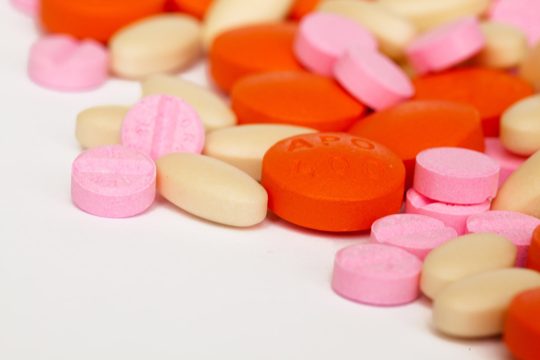Antibiotics in Your Food: Should You Be Concerned?
Antibiotics such as amoxicillin, doxycycline, metronidazole, cephalexin, azithromycin, clindamycin, ciprofloxacin, penicillin, nitrofurantoin, cefdinir, and augmentin doxycycline hyclate are used in food-producing animals, but the amount of antibiotics in foods is very low. Antibiotics are strictly regulated, but some people are concerned about the possibility of resistant bacteria in food products.
In this article, we will discuss why you need to be aware of the potential risks and how to minimize your risk of illness. Antibiotics are a vital tool for preventing and treating infections in humans and animals, and the most commonly used antibiotics in food-producing animals are amoxicillin, doxycycline, metronidazole, cephalexin, azithromycin, clindamycin, ciprofloxacin, penicillin, nitrofurantoin, cefdinir, and augmentin doxycycline hyclate. While it is true that the amount of antibiotics in food is very low, there is still a potential risk of developing antibiotic resistant bacteria, which could be passed on to humans through the food chain. This is why it is important to be aware of the potential risks of consuming food products with antibiotics in them and to take the necessary steps to minimize your risk of contracting an infection.

One way to do this is to ensure that you purchase food products from reputable sources and that you follow all instructions on labels and packaging. Additionally, it is also important to check with your doctor or healthcare provider to ensure that you are taking the right antibiotics for your condition.
Finally, it is also important to practice good hygiene and to avoid consuming food products that are potentially contaminated. By following these simple precautions, you can help reduce your risk of illness and ensure that you are getting the most out of your antibiotics.
Antibiotic Use in Food-Producing Animals
Antibiotics are used in food-producing animals to prevent, control, and treat bacterial infections. This is done to ensure the health of the animal and to ensure that food products are safe for human consumption.
The amount of antibiotics used in food-producing animals is strictly regulated by the FDA. Furthermore, the antibiotics used in food-producing animals must be approved for use in animals, and the usage of these antibiotics must be done in a responsible manner.

Not only must the antibiotics be used in a responsible way, but the FDA also requires the producer to keep records of the antibiotics used, the amount of antibiotics used, and the type of animal it is being used on. Additionally, the producer must also submit to regular and ongoing inspections to ensure they are adhering to proper guidelines and protocols.
By ensuring that food-producing animals are administered antibiotics in a safe and responsible manner, we can provide consumers with a safe food supply that is free of bacterial contamination.
The Amount of Antibiotics in Foods is Very Low
The amount of antibiotics that end up in food products is very low. This is due to the fact that antibiotics must be used in very specific ways to ensure that the animal is not harmed and that the food products are safe for human consumption.
The FDA also ensures that the amount of antibiotics that end up in food products is very low. The FDA is very strict in regards to the use of antibiotics and for good reason. The misuse of antibiotics can lead to antibiotic-resistant bacteria, which can cause serious illnesses. For this reason, the FDA has established a set of rules and regulations that must be adhered to when using antibiotics.

This includes the amount of antibiotics used as well as the length of time they are used. Furthermore, the FDA also requires that antibiotics are only used when absolutely necessary.
In addition, they inspect and monitor food products that have been treated with antibiotics to ensure that the proper levels and usage have been followed. All of these measures are put in place to ensure that the amount of antibiotics that end up in food products is kept to an absolute minimum.
Antibiotics are Strictly Regulated
The FDA strictly regulates the use of antibiotics in food-producing animals. This is done to ensure that the antibiotics are used in the most effective and safest way possible.
The FDA also monitors the amount of antibiotics that end up in food products, and the amount is very low. It is important to note that antibiotics are not used to enhance growth or improve food production, but to help prevent and treat illnesses in animals. This is done to ensure that the food products consumers receive are of the highest quality, free of any potentially dangerous bacteria.

The FDA also works to ensure that the use of antibiotics in food-producing animals is limited in order to reduce the risk of creating resistant bacteria. This means that the antibiotics used in animals are less likely to lose their effectiveness in treating illnesses in humans.
In addition, the FDA also monitors the use of antibiotics in food-producing animals to ensure that the animals are receiving the appropriate treatments. By strictly regulating the use of antibiotics in food-producing animals, the FDA helps to ensure that the food products we consume are safe and of the highest quality.
Resistant Bacteria in Food Products
Some people are concerned about the possibility of resistant bacteria in food products. This is because antibiotics can kill off susceptible bacteria, but resistant bacteria can survive and spread.
However, the FDA monitors the amount of antibiotics in food products and takes steps to prevent the spread of resistant bacteria. In addition, the FDA has implemented various programs to make sure that the food products we eat are safe and free from harmful resistant bacteria. For instance, the FDA requires that food producers follow Good Manufacturing Practices (GMPs) to reduce the risk of bacteria contamination. This includes ensuring that food producers use appropriate sanitation practices, use appropriate ingredients, and store food products at the appropriate temperature.

Furthermore, the FDA regularly inspects food-producing facilities to make sure that they are in compliance with all of the applicable laws and regulations. The FDA also requires food producers to label their food products with the appropriate amounts of antibiotics, to ensure that the public is aware of the potential risks.
Finally, the FDA also educates the public about the dangers of antibiotic resistance and the importance of proper food handling. By taking these steps, the FDA is helping to reduce the risk of resistant bacteria in food products, and helping to ensure that the food we eat is safe and healthy.
Why You Need to Be Aware
It is important to be aware of the potential risks of antibiotic use in food-producing animals. The FDA monitors the amount of antibiotics that end up in food products, but it is still possible for resistant bacteria to spread.
Therefore, it is important to be aware of the potential risks and take steps to minimize your risk of illness. The Centers for Disease Control and Prevention (CDC) recommends that you take steps to minimize your risk of infection from antibiotic-resistant bacteria. This includes avoiding buying meat or eggs from animals that have been given antibiotics, and using antibiotic-free products when possible.

If you do buy products from animals that have been given antibiotics, it is important to cook them thoroughly to reduce the risk of contamination. Additionally, it is important to wash your hands regularly with soap and water, and to avoid contact with animals that may have been exposed to antibiotic-resistant bacteria.
It is also important to practice good food safety habits, such as keeping food stored at the proper temperature, not leaving food out for more than two hours, and never using the same cutting board or utensils for raw and cooked food. Taking these steps can help reduce your risk of exposure to antibiotic-resistant bacteria and help keep you healthy.
How to Minimize Your Risk of Illness
There are several ways to minimize your risk of illness related to antibiotic use in food-producing animals. First, it is important to follow proper food safety guidelines.
This includes washing your hands before and after handling food, cooking food thoroughly, and avoiding cross-contamination. Additionally, it is important to buy food products from reputable sources and to check the labels to make sure that the products contain only approved ingredients. Another way to reduce your risk of antibiotic-related illness is to buy organic and certified humane products. These products are produced according to strict standards and are generally free from antibiotics.

Lastly, it is important to practice portion control and to make sure that you are not overindulging in foods that contain antibiotics. Eating a balanced diet and limiting your intake of processed foods can help you avoid unnecessary exposure to antibiotics.
Lastly, it is beneficial to be aware of the potential risks associated with antibiotic use and to be mindful of how and why antibiotics are used in food-producing animals. Taking these steps can help you reduce your risk of antibiotic-related illness and keep yourself healthy.
Conclusion
Antibiotics are used in food-producing animals, but the amount of antibiotics in food products is very low. Antibiotics are strictly regulated, but some people are concerned about the possibility of resistant bacteria in food products.
It is important to be aware of the potential risks and to take steps to minimize your risk of illness. When it comes to the use of antibiotics in food-producing animals, it is important to understand the potential risks and take proactive steps to minimize them. The amount of antibiotics present in food products is extremely low, and the use of antibiotics is strictly regulated. However, there is still a concern among some people about the potential for the presence of antibiotic-resistant bacteria in food products.

This is why it is important to be aware of the potential risks and to take steps to minimize your risk of illness. For example, one can take steps to ensure that their food is cooked thoroughly and the environment in which it is stored is clean and hygienic.
Additionally, one can also avoid eating raw or undercooked food and adhere to proper food storage guidelines. Taking these simple steps can help to dramatically reduce the risk of illness from antibiotic-resistant bacteria.
About us
Welcome to SeniorCaresHub! Welcome to our comprehensive senior care destination! We pride ourselves on being a trusted resource for all things related to caring for aging loved ones. We understand the unique needs and challenges that come with senior care, and our mission is to provide you with the information, resources, and support you need to confidently navigate this journey and help you provide the best possible care for your aging loved one.

